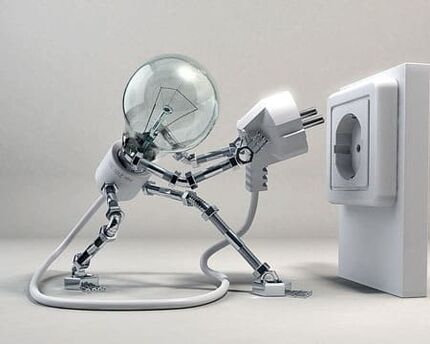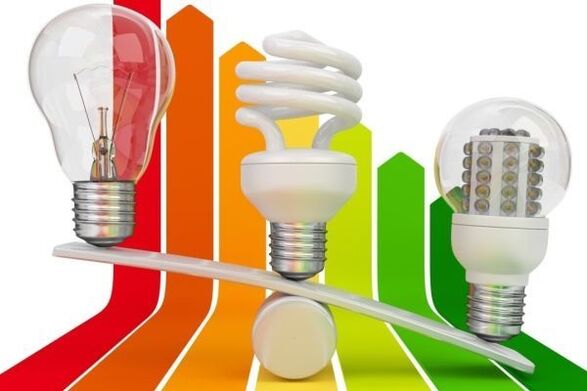
The price of energy carriers goes up regularly, so the question of how to save electricity in the home becomes more and more important. It's important to note that if say about ten or fifteen years ago, the average family of three didn't have special consideration because utilities didn't eat up the bulk of the budget, things have changed dramatically now.
At the same time, taking advantage of all the possibilities of modern energy saving, there is absolutely no need to use dim lights, refuse to turn on necessary equipment and "rewind" meter readings, which can result in huge fines for violators. It is important to simply recognize and take for granted the need to save money, and to uphold this principle in a way that is very accessible to each of us.
Today's agenda - how much electricity you can save and how. We all ask ourselves a question sometimes - "Am I paying a lot for light (or electricity)? Is it possible to reduce those costs somehow? " But as a rule, this thing doesn't go any further than a conversation. But the truth is, not everything is so scary and difficult. Try applying the rules described below (or at least some of them) and you'll notice the difference right away.
There are two ways to reduce your electricity bill:
- change our behavior slightly
- We use modern energy saving technology
In the first case, everything will be up to us only, i. e. following certain rules will reduce energy costs. The second method involves investing in equipment and devices that can significantly reduce power consumption. But. . . Invest once and you can relax and technology will do everything for you. In most cases, the cost pays off within a year.
If we turn to statistics, the approximate cost distribution for an average electricity apartment is as follows:
- 25% - kitchen utensils such as electric stoves, kettles, microwave ovens
- 21% - refrigerator
- 20% - Lighting
- 9% - washing machine, dishwasher
- 11% TV, computer
- 14% - Other
Using this data, you can roughly calculate how much and how much you can start saving. Before you start, I recommend that you write down how much energy you consume each month. what for? This will give you an idea of how much you really save by applying certain methods. The results will be visible immediately, which will give you an extra incentive.
Let's start saving energy:
Turn off the lights when you leave
Everyone knows this expression, it's just. . . we don't use it at home for some reason. It's futile, it's the easiest and most affordable way to save energy. Turn off the lights when you leave the room. Courts can also attribute like work TV. This "excess" costs us about 30% of our lighting costs.
energy saving lamp
Old incandescent lamps consume 100 watts, energy saving - 20 watts. 5 times energy saving. Now popular LED lights with a power of 5 watts. Sure, they're more expensive than both, but they consume far less energy and last longer under the same lighting conditions. Don't be stingy and buy. The main thing is to choose those that have a big guarantee - about 2 years. Within a year, the LED lights paid off.

more natural light
Rooms with white or light-colored wallpapers are brighter (sorry for the pun) because they reflect 90% of the light. For example, dark tones (near black) absorb up to 90% of light. Keep windows and light fixtures clean. Not very clean and dusty, they retain up to 30% of the light. Don't clutter the windowsill with flowers and other crap. Position your workspace near a window. If you don't have enough light, use a low-wattage desk lamp.
Multi-tariff schedule (day and night)
The benefit is that many appliances are always on (refrigerator) or in sleep mode (computer, TV, etc. ). Therefore, in the evening hours, the cost of energy consumption will be reduced. The savings become even more pronounced if you shift some energy-intensive operations to the evening (washing, cooking, ironing).
Turn off all appliances
First, here are the devices that work in standby mode: computers, TVs, microwaves. Air conditioners, water heaters, etc. Count the hours (or even minutes) of each day you use this or that device. Microwave for 15 minutes, TV - say 2-3 hours, etc.
It turns out that in standby mode the device works almost 24/7 - 20 - 23 hours. All the while, they are slowly "stealing" our energy and thus money. Of course, everyone doesn't consume much, but they consume a lot. A year in standby mode costs us about 3, 000 rubles.
Few people know, but many devices still consume energy even when turned off but not unplugged: hair dryers, phone chargers.
Intelligent Technology
Use equipment of energy class A (so the most energy consuming is class G). Differences in energy consumption can vary widely even between modern models. What can we say about outdated devices (originally from the 90s and above). Differences in power consumption may vary, no, sometimes not. Dozens of times!
Many models have an autosave mode. In washing machines and dishwashers, for example, depending on the workload, the system uses the optimal amount of water and energy, reducing consumption by 30-40%. We'll save on existing equipment if you're not ready to replace it.
home appliances
refrigerator
Proper installation away from direct sunlight, central heating and stoves will save 20-30%. Additional measures: Leave a gap between the refrigerator and the wall to allow air to circulate freely. Defrost more frequently - the more frost, the higher the energy consumption. There is no hot food in the refrigerator. Always cover all liquid dishes (soups, preserves). Remember, higher humidity equals higher energy consumption.
Washing Machines and Dishwashers
- Work only under full load.
- In a fast and economical way to wash.
- Low temperature washing (washing) (no high temperature washing required)
cooking
- If you have gas in your apartment, you're in luck. It is several times more economical than electricity.
- Cover and bring to a boil.
- Always boil water only as needed.
- The water pre-poured into the pot for cooking heats itself to room temperature, and the stove requires less energy to heat and boil further.
- residual heat. Turn off the stove 10-20 minutes before the end of cooking. The cooked dish itself will be in the desired state.
- Microwave the plate at a time in a large plate - you can then divide it into portions for everyone.
ironing
- Over-drying and under-drying laundry increases energy consumption. We use the golden mean.
- Turn off the iron 5-10 minutes before the end of ironing. We iron the heat.
- Use an iron with an automatic shut-off function.
warm up
Up to 50% of heat loss in an apartment is through doors and windows. Our actions are either plastic windows (they reduce heat consumption by 80% at a time) or the more economical option - we close all cracks in doors and windows (we use seals). If the house is cool (not cold), don't rush to turn on the heater right away - sometimes something warm from your clothes is enough.
As you can see, it's not hard to start saving battery. You can easily save 30-50%, if you are a little confused then you can usually reduce your payment by 2-2. 5 times. The main thing is to turn on "energy saving" mode in your mind. You'll immediately notice a decrease in payments. Good luck with all your savings.
























